Maternal love is natural, humans have maternal love, and insects also have maternal love; humans have family affection and paternal love, which also exist in some insects.
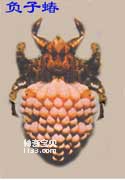
1. The stink bug carrying egg masses on its back
Look at the stink bug in the picture. Its broad back carries so many balls that look like small steamed buns, and they are arranged closely and regularly. You must be wondering what this is? And what is the name of this "turtle insect" that looks like a "turtle carrying a stele"? This is the most unforgettable stink bug in the stink bug family, and it The "little steamed buns" carried on the back are exactly its children, the eggs laid by the female stink bug. The male carries these eggs on his back until they hatch and are born, hence the name.
The stink bug is an aquatic insect that lives in ponds, rivers, reservoirs and other waters. It makes a living by preying on aquatic organisms such as small fish, shrimps, tadpoles, etc. Their bodies are large and flat, their hind legs are specialized for swimming, their front legs are for catching, and their odor glands are not well developed. The family life of the family bug is unique and interesting. "Husband and wife" are often inseparable, with a clear division of labor in childbirth and a tacit understanding of cooperation. The male often carries the female on his back and floats leisurely in the water. The male is also responsible for the hunting task, while the "wife" enjoys the harvest. He is truly a model "husband". When the female stink bug is about to lay eggs, she climbs up the back of the male, hugs the male's chest plate with her front feet, and pushes on the wings of the male's abdomen with her hind feet to support her body. The end of her abdomen bends downward to start laying eggs. More than 100 eggs can be laid at one time, arranged very neatly from front to back. The eggs are firmly stuck to the male's back, and the male carries the eggs and lives in the water, waiting for the eggs to hatch. From then on, the "husband" became both father and mother, shouldering the heavy responsibility of raising children in obscurity. He carried his child on his back and continued swimming in the water. On the one hand, it looks for food to ensure a strong body so that the egg on its back can develop and grow healthily on the hotbed of the father's body; on the other hand, it avoids enemies and ensures the safety of the child. After a few days, the eggs on the father's back matured and hatched. At this time, their father felt that his burden gradually became lighter, and he breathed a sigh of relief until the children looking at him began to swim away. His important task of "protecting his children" and "nurturing his children" was finally completed. You see, the bearded stink bug is indeed a model "husband" and a beloved "father". It is rare among insects and is admirable. Why doesn't the female stink bug lay her eggs in water or other objects? Because after the female insect lays the eggs, her body is already weak, and she is afraid that her life will end before she completes the task of raising her children. If the eggs are If they are laid elsewhere, they can easily be eaten by other predators, and the children will not be taken care of after birth, so it is not safe. Therefore, if the eggs are laid on the backs of "relatives", everything will be at ease. The mother has good intentions, but of course the father also has to endure hardships.
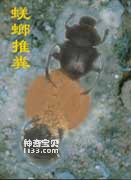
2. The dung beetle who stores food for his children
Dung beetles, commonly known as dung beetles, belong to the order Coleoptera, family Dung beetles. The body is black or dark brown, large and medium-sized insects. The forefoot is a digging foot, the hindfoot is close to the end of the abdomen and far away from the midfoot, and the tibia of the hindfoot has an end distance. The tentacles have leaf-shaped gills, the malleus is hairy, and the small scutellum is invisible. The elytra completely cover the ventral valve.
When you walk along country roads or visit pastoral areas, you can often find rolling dung balls. If you look carefully, you will see that it is two insects carrying the "treasure" - food to satisfy hunger. Their behavior is very strange. One pulls from the front and the other pushes from behind. With each pull and push, the dung ball slowly rolls forward. It turns out this is a couple. Usually the female worm is in front and the male worm is behind, and they cooperate tacitly. That kind of scene is indeed very interesting. This clever and funny little insect is commonly known as a dung beetle or a dung beetle. It is also called a dung beetle or a cow dung beetle. Dung beetles are completely metamorphosed insects that emerge at night. But poop ball pushing is done during the day. Burrowing underground (cave) life. It is recorded in the ancient Chinese book "Erya Wings" (written by Luo Yuan of the Song Dynasty): "The dung beetle turns the pill, one moves forward and drags it with its hind feet, and the other pushes it from behind. It is a candina nine. After a few days, there will be small Dung beetles emerge from it." From the records in these few sentences, we can see that the author's observations are very detailed and tell us the purpose of the dung beetle pushing the dung ball. Cockroaches can make large piles of cow dung into small balls, and then push them one by one into pre-excavated holes to store and enjoy them slowly. Because the round shape saves effort when rolling on the ground, it is easier to transport it back to the nest. The female dung beetle lays her eggs in dung balls. After the eggs hatch, the baby dung beetles can get food immediately. This is the dung beetle's expression of maternal love for its children. It would rather work hard so that its children no longer have to run around looking for food after they are born. However, among the same kind of dung beetles, there are also some lazy people and scoundrels hidden. They do not work hard and often wait for the opportunity to snatch the rolling dung ball on the way, trying to take possession of it, and the two sides start a fight over it. If the "robbers" win, they will not only take away the dung balls, but also take away other people's "wives". These scoundrels are really hateful!
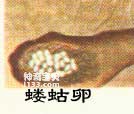
3. The cricket that raises children
Molecules belong to the order Orthoptera, Molecidae, incomplete metamorphosis, medium to large insects, and the body is dark brown or yellowish brown. The antennae are shorter than the body, the forelegs are digging feet, the forewings are short, and the hind wings are wide. The tail is longer but not segmented. It lives underground, tunnels under the surface at night and early in the morning, and bites crop roots, germinated seeds and seedlings, etc. It is an important underground pest. Mole crickets live underground in burrows and also exhibit child-loving behavior. After the female mole cricket lays her eggs, she runs around looking for food. When the eggs hatch and the larvae are born, she returns to her burrow to take care of these young children. As the nymph gradually grows up, the original small dwelling is no longer enough, so it digs a large hole in the soil to increase the living area. When the children can live independently and go out to look for food, the mother will move to another place by herself and leave the old nest to the children. This can be regarded as a "property" left for future generations!
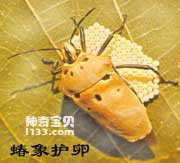
4. Egg-protecting shield bugs
Shield bugs are small to medium-sized in size. The back is strongly rounded and the ventrally is flat and oval. The head is short and wide. Antennae 4 or 5 segments. The scutes are extremely large and U-shaped, covering the entire abdomen and most of the forewings. The body colors are diverse and vary from species to species, including yellow, red, blue, plum, purple, brown, etc. The eye-catching spots are obvious. However, little is known about the strong maternal love of female shield bugs. After it lays eggs, it will stay near the egg mass for a long time to protect its babies in case something happens to its babies. It will not reluctantly leave until all the egg masses hatch and its children come out of their shells and wander around one by one. It's amazing that small insects can have such kind motherly love.

5. Earwigs hatching eggs and raising children
Commonly known as ear-pinworms, these insects can also lay eggs. After the male and female get married, they dig a hole 8-10 cm deep in the ground as a nursery, and repair the walls of the hole neatly, and then the female enters the nursery. The ear-pinworm soon began to lay eggs. After laying eggs, it lay down on the egg pile, like a hen hatching chicks. After more than 20 days, lively and lovely children were born one by one. At this time, the female earworm will open the hole and go out to look for food for her children. Newly born babies often play around their mother, who takes care of them day and night. The children gradually grow up, and until they are 3 years old, the mother allows them to leave the nest and make a living independently. The female earworm takes great care of her children and can be called a loving mother; while the male earworm does nothing in raising the children because it ends its life and dies shortly after mating. Earwigs belong to the order Dermoptera. Males have large and curved tails, while females have short and straight tails, clearly showing sexual dimorphism. This insect is mostly nocturnal, lurking in the soil and under bricks during the day, and often both sexes live together. Most are omnivorous, but there are also carnivorous species that can capture some pests in nature for food.
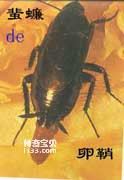
6. Cockroach (cockroach) with negative egg sheath
Different types of insects have different forms of maternal love. Cockroaches are annoying oil thieves. They reproduce very quickly, which is inseparable from their female egg-protecting habits. Even before their children are born, they have shown great concern for their offspring. Before the female worm ovulates, a yellow-brown ootheca is formed on the abdomen, which contains 20-30 eggs. After the egg sheath is produced, it refuses to put it down for fear of being eaten or injured by other predators, so it still sticks the egg sheath to the end of its abdomen. Even when they go out to forage at night, they carry this heavy "baggage" with them. They would rather work harder than let future generations encounter misfortune. The egg develops day by day in the egg shell. It is not until the little nymph is born that it removes the egg sheath and places it in a quiet and hidden gap. A few days later, the little nymph is born.
animal tags:
We created this article in conjunction with AI technology, then made sure it was fact-checked and edited by a Animals Top editor.